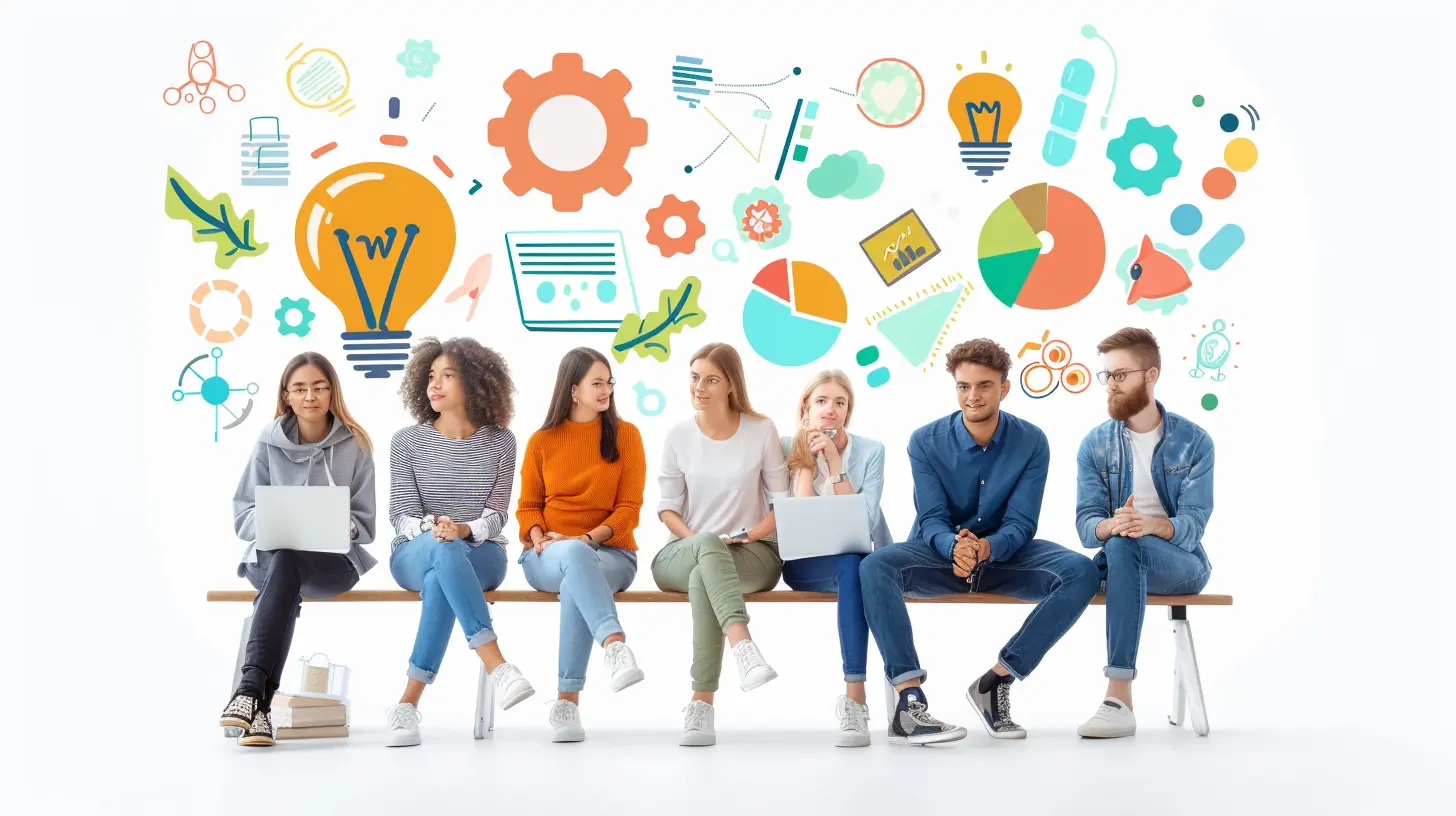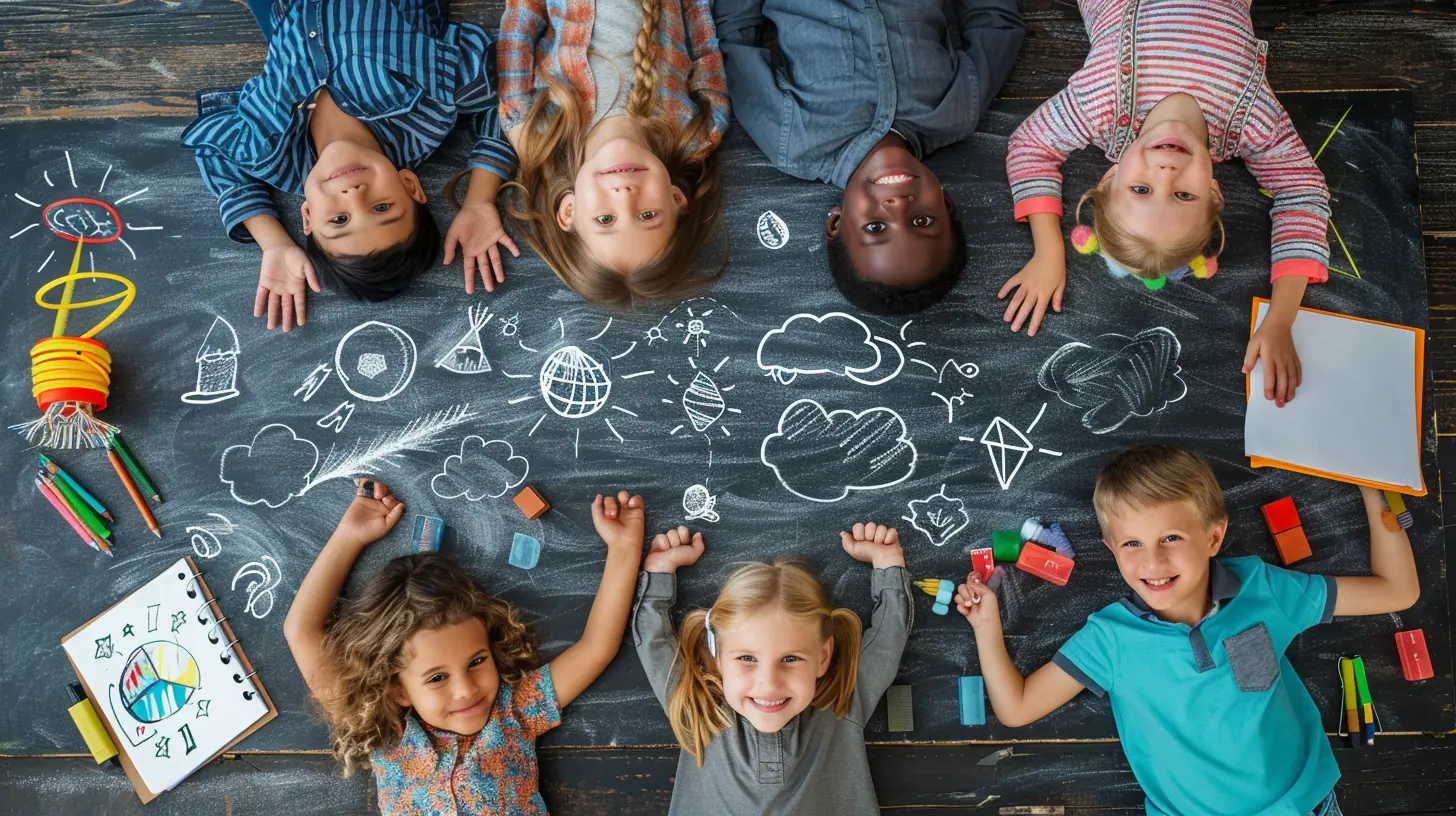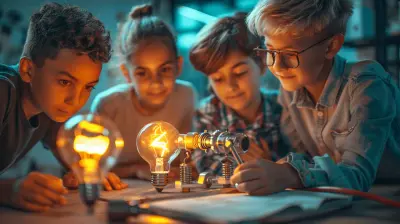Project-Based Learning: A Gateway to Collaborative Education
17 November 2025
Have you ever sat through a lecture wondering, “Why am I even learning this?” or “When will I ever use this in real life?” Yeah... we've all been there.
Now imagine this instead — you're working with a small team, solving a real-world problem, building something from the ground up, and learning while doing. No information dumps. No memorization marathons. Just hands-on, real collaboration. Welcome to the world of Project-Based Learning (PBL) — where books meet brains, and classrooms echo with creativity.
In this deep dive, we’re pulling back the curtain on what makes Project-Based Learning so powerful, why it’s becoming the secret sauce in modern education, and what it means for both students and educators in a rapidly evolving academic and professional world.
What Is Project-Based Learning (PBL), Anyway?
Alright, let’s clear the air. Project-Based Learning isn’t just about group projects. It’s not the “Hey, let’s all slap our names on a PowerPoint the night before it’s due” kind of vibe.Project-Based Learning is a teaching method that encourages students to gain knowledge and skills by working for an extended period of time to investigate and respond to real-world questions, problems, or challenges. These aren’t hypothetical, either — we’re talking real problems that need real solutions.
Think of it like this: traditional learning is a boxed meal; you heat it and eat it. PBL? That’s you growing the ingredients, designing the recipe, and cooking the dish — all while learning nutrition, science, and teamwork along the way.
The Magic Behind PBL's Growing Popularity
Why is Project-Based Learning grabbing headlines and finding its way into education systems across the globe?There’s something almost magical (and practical) about the way PBL works. It flips the conventional education model on its head — instead of dumping knowledge and hoping it sticks, PBL makes learning stick by building it around curiosity, engagement, and action.
1. Real-World Relevance
Let’s be real. The world is changing fast. Jobs are evolving. Skills that mattered ten years ago might not mean anything today. PBL bridges that gap by anchoring learning in real experiences.Rather than asking, “What do I need to memorize for the test?”, students ask, “How can I solve this issue?” That simple shift in perspective is a game-changer.
2. A Playground for Collaboration
In life, you’re rarely working alone. Teams are everywhere — in tech firms, hospitals, design studios, and startups. PBL gives students a sneak peek at that world. They brainstorm together, argue constructively, divide responsibilities, and push each other to the finish line.It’s like rehearsal for the grand stage of life.
3. Developing Soft Skills (Without The Dull Lectures)
You know what employers consistently beg for? Communication, critical thinking, problem-solving, creativity. PBL lets students naturally develop these skills while tackling juicy, complex projects.No textbooks required.
What Makes PBL So Powerful?
Let’s peel the onion a bit. PBL works — but why? What’s going on behind the scenes that makes it so effective?a. Motivation Gets a Serious Boost
Here’s the truth: students care more when they can relate. A project about building a sustainable garden at school? That feels real. That matters. Studies show that when students see the value in what they’re doing, they feel more motivated, more connected, and way more likely to dive deep into the learning.b. Learning Becomes Active (Not Passive)
Passive learning is like watching someone ride a bicycle and hoping you’ll master it. Active learning — the kind PBL offers — is hopping on the seat, shaky at first, but eventually breezing down the road on your own.Students ask the questions. They hunt for answers. They analyze, test, create, revise. No two journeys are identical, and that’s the beauty of it.
c. Mistakes Are Celebrated, Not Punished
In most classrooms, failure stings. In PBL, failure is part of the process. It’s encouraged. Mistakes mean you’re trying, experimenting, uncovering what works — and what totally doesn’t. It’s not “wrong”; it's progress.
Anatomy of a Great PBL Experience
Okay, so now you might be wondering: what does Project-Based Learning actually look like in action?Here’s a breakdown of the elements that make a PBL experience truly memorable:
✔️ A Driving Question
Every great project starts with a compelling question. This isn’t some yes-or-no quick answer. It’s open-ended. Messy. The kind of question that keeps you up at night. Something like:- “How can we design a school that works for everyone?”
- “What can we do to reduce plastic waste in our community?”
- “How can we preserve local history using modern technology?”
✔️ Inquiry and Research
It’s not about being spoon-fed answers. Students dig into books, interview experts, surf the web, and test prototypes. It’s like being a detective on a mission.✔️ Student Voice and Choice
One of PBL's superpowers is giving students ownership. They decide how to approach the project, what tools to use, and how to showcase their solution. That autonomy fuels engagement and creativity.✔️ Revision and Reflection
Fail fast. Learn fast. Projects in PBL go through multiple drafts, with constant feedback loops. Students learn to revise, reflect, and refine — skills we all need, whether you're 16 or 60.✔️ A Public Product
That’s right — the final project isn’t hidden in a folder on a desk. It’s presented. Maybe to teachers, maybe to the community, maybe online. Students feel real pressure, pride, and accountability because their work has an audience beyond just their grades.Real Examples That Prove It Works
Don’t just take our word for it. Here are a few real-world PBL projects that have transformed classrooms and communities alike:- Urban Gardening Project: A group of fifth graders designed and built a sustainable garden in their schoolyard, learning about biology, eco-systems, nutrition, and math along the way.
- Podcast Series on Social Justice: High schoolers created, produced, and launched podcasts featuring interviews, research, and real stories tackling important social issues. It was part media studies, part sociology, and entirely student-run.
- Redesigning the School Library: Middle school students surveyed peers, studied architectural design, created floor plans, and pitched a complete redesign to administration. Spoiler: it was approved.
The Role of Teachers in PBL (Hint: It’s Not Lecturing)
You might be thinking, “So... do teachers just sit back and sip coffee while students run wild?” Not quite.In Project-Based Learning, teachers become facilitators — more like guides on a trail than tour bus drivers. They:
- Help craft meaningful questions.
- Scaffold skills along the way.
- Check in, offer feedback, and mentor.
- Ensure standards and objectives are still being met.
Think Gandalf, but with lesson plans.
Challenges of PBL (And How to Handle Them Like a Pro)
Let’s not sugarcoat it — PBL isn’t always smooth sailing. There are bumps. But with the right mindset, those bumps become stepping stones.🚧 Time Management
Project work can eat up time. The key? Clear timelines, checkpoints, and collaborative planning.👥 Unequal Participation
We’ve all had that group member who ghosts. Teachers can address this with self and peer evaluations, rotating roles, and continuous check-ins.🧩 Assessment Woes
Measuring creativity? Collaboration? It’s tricky. But rubrics, portfolios, and reflective journals can paint a fuller picture than traditional tests ever could.Why PBL Is the Future of Education
Here’s the truth: the traditional education model is showing its age. Memorization doesn’t cut it. Standardized tests don’t reflect real-world ability.Project-Based Learning shifts the focus from input (how much you can cram in) to output (what you can actually do with what you learned).
It’s not just preparing students for the workforce — it’s preparing them for life. For messy problems, complex solutions, and rapid innovation.
PBL creates confident, curious, capable learners who think independently and work collaboratively. It makes learning meaningful.
Final Thoughts: Ready to Open the Gate?
So, is Project-Based Learning the magic key to collaborative education? Sure feels like it.It invites students to step into the driver’s seat, navigate uncertainty, and create something real. It turns classrooms into incubators for innovation, empathy, and teamwork.
This is more than a trend. It’s a movement. A mindset. A gateway into education that doesn't just prepare students for tests — but for life.
So the real question is — are we bold enough to walk through it?
all images in this post were generated using AI tools
Category:
Collaborative LearningAuthor:

Bethany Hudson

